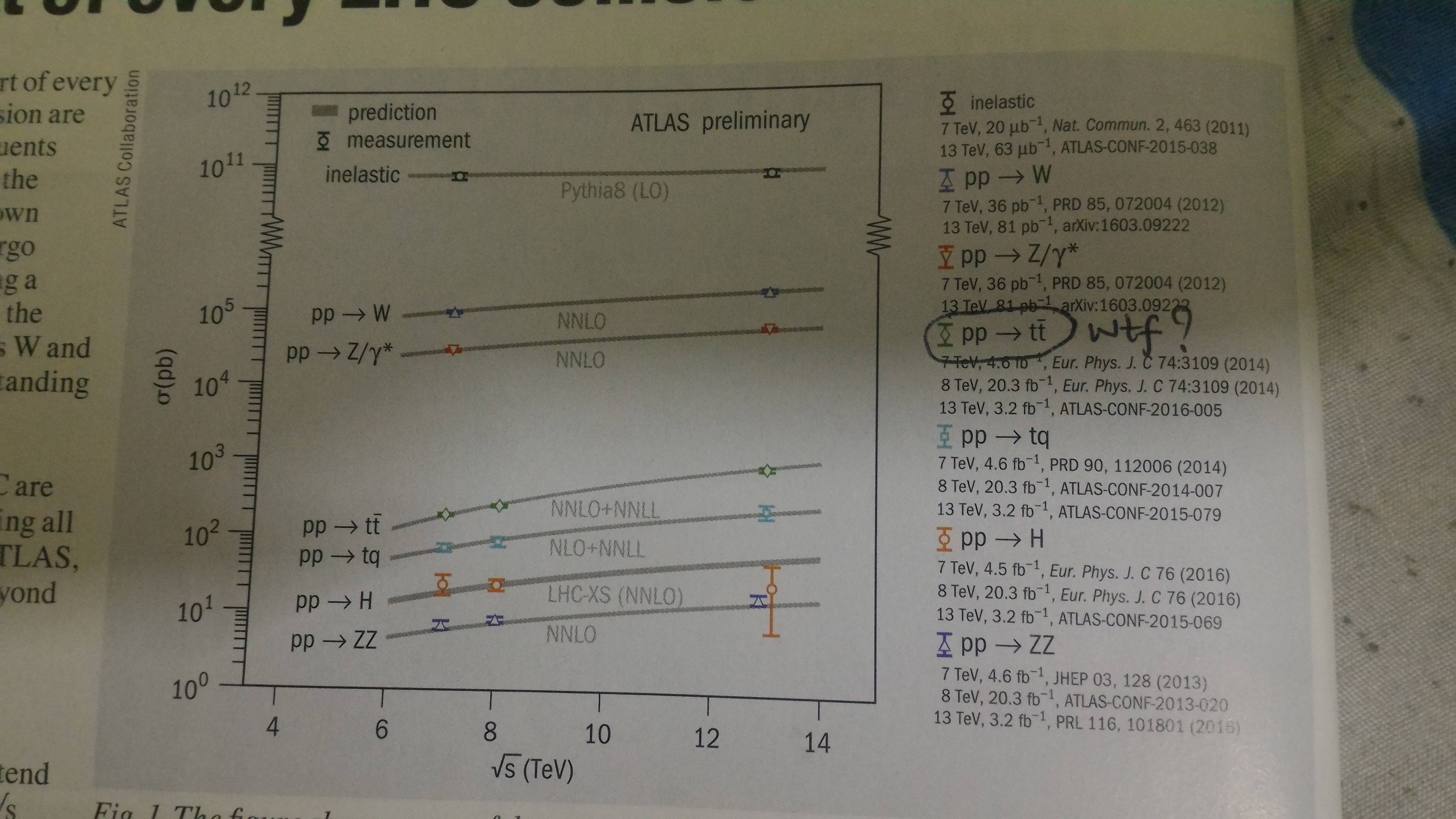I am not very well versed in particle physics lingo but as much as I know $p$ stands for proton and $t$ stands for top-quark. Then, how could this be possible?
I hope I am wrong about what is written since that would mean,
$$\text{proton} + \text{proton}\quad\rightarrow\quad \text{top-quark} + \text{anti-top-quark}$$
because this is certainly wrong since it violates baryon number conservation (and so many other rules I studied in particle physics course). In fact I can not see any sanity in any of the equations proposed. So definitely I am wrong. But then what these mean. I believe someone here can enlighten me.
PS: I found this in CERN courier magazine, issue May, 2016. The article was appropriately titled "At the heart of every LHC collision".

